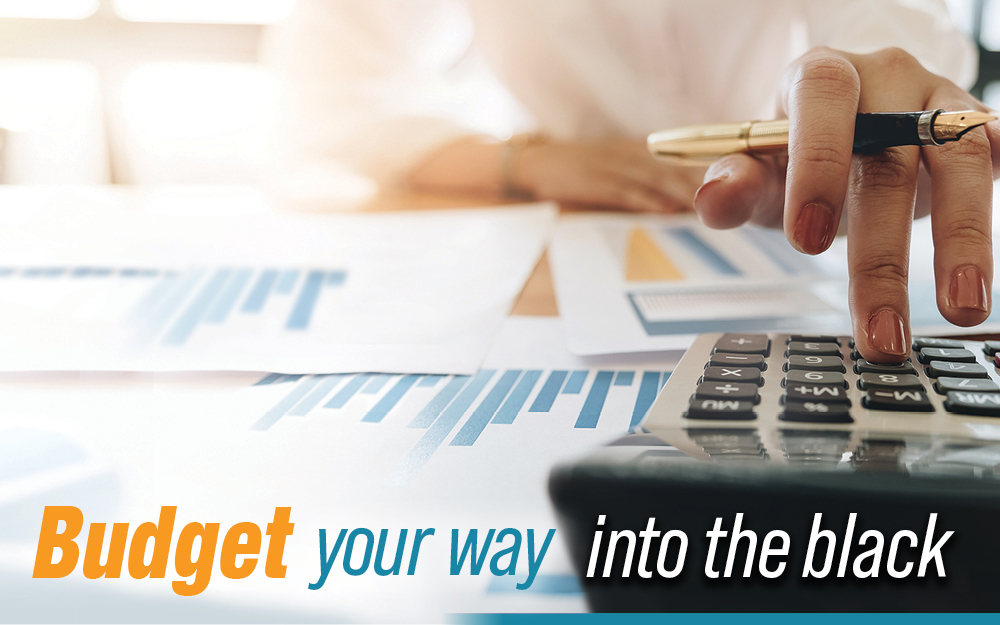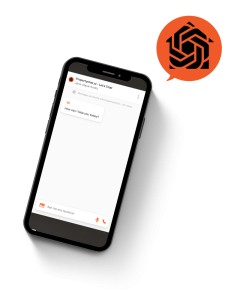Budget your way into the black

About the author
Jane Slack-Smith has been named one of the Top 10 Property Experts in Australia by Money Magazine, one of the Top 4 Financial Influencers by Qantas and been awarded the Australia’s Mortgage Broker of the Year twice.

$2.2 trillion. That’s how much Australian households owe right now, according to the latest ABS stats.i Household liabilities grew by $1.2 billion in the last quarter alone. Real household debt per person has risen steadily by around 2 per cent per year, and now sits at around $79,000 per person.ii
Sound scary? The good news is, there are ways you and your family can buck this trend and ensure your finances stay out of the red and in the black. The key is good old-fashioned budgeting.
Why a budget is important
Budgeting is simply the most straightforward, proactive way to ensure you will always have enough money for the things you need whilst allowing you to put a little aside for the things at the top of your wish list. That’s the practical side of it. A budget can also help you reduce financial stress, improve your family relationships, redefine your personal values and provide a good example for your kids or grandkids.
How to set up a budget
The first step is to do an audit of what you’re spending. You may also need to do a round-up of what you’re earning, if you have several income streams. Start by gathering as much evidence as possible; utility bills, receipts, bank statements etc. Make a tally of your outgoings. Be as accurate as you can; where you don’t have a record to substantiate a line item, try not to underestimate it.
Then, compare your income to your outgoings. If you spend more than you earn, you’ve got work to do. If you’ve got a surplus, that’s a great start, but there’s always room for improvement.
The second step is setting goals. Choosing well defined goals – beyond just ‘save more’ or ‘get rich’ – is important for your long-term budgeting success. Try setting at least a few short-, mid- and long-term goals. For example, in the short term, you might aim to reduce your spend on clothing by $100 a month. In the long term, you could aim to build up an emergency fund equivalent to six months’ household income.
Why budgets fail
If all this sounds familiar to you, chances are you’ve tried and not succeeded at budgeting in the past. That doesn’t necessarily mean you’re ‘bad with numbers’ or lacking discipline. There are several common reasons why budgets don’t stick. Budgets lacking in defined goals are often prone to failure. As are those that are too restrictive, allowing no room for spending on things like meals out or entertainment; anyone who’s tried to completely cut ‘fun’ spending knows how unrealistic this is. Many budgets also ‘break’ after a short time because they fail to account for unexpected emergency expenses, from vet bills to car repairs.
Once you’re aware of why your last budget didn’t succeed, you can start to build a better one.
The right technology can help make your budget more accurate, realistic, effective, and easy to stick to. You don’t even have to create a spreadsheet from scratch, or use complicated software on your PC. Carry a budgeting solution in your pocket with a handy smartphone app:
Budgeting apps to make it easier
1. ASIC MoneySmart’s TrackMyGoals and TrackMySpend apps – FREE
These government-produced apps draw on tonnes of research to help you implement proven savings and budgeting strategies.
2. Pocketbook – FREE
Pocketbook syncs with your bank account, automatically sorts your expenses into categories, and receive automatic alerts and warnings to keep you on track.
3. You Need a Budget – US$5/month or US$50/year
In the case of YNAB, one of the world’s most popular budgeting apps, it’s a case of spending money to save money. According to their stats, the average user saves US$3,300 in their first nine months – that’s over $4,300 Aussie dollars.
Your budget needs to work for you and your individual circumstances and will require attention on a regular basis to make sure it’s still working for you. Get started today and you’ll soon be well on your way to achieving your saving goals.
i ABS, 5232.0 – Australian National Accounts: Finance and Wealth, Mar 2016
ii ABS, 4102.0 – Australian Social Trends, 2014 (Final): Trends in Household Debt





